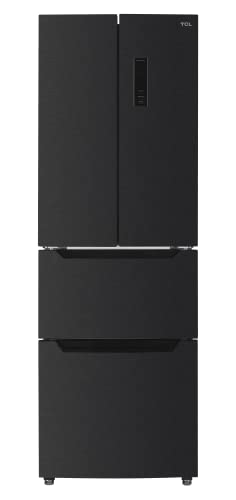The Comprehensive Guide to Refrigerators in the UK
Fridges are a vital device in every family, serving a vital role in food preservation and safety. The UK market uses a diverse series of fridge types, sizes, features, and brands. This short article intends to offer a thorough understanding of fridges available in the UK, including their features, energy performance, and factors to think about when purchasing.
Kinds Of Refrigerators Available in the UK
When searching for a refrigerator, it is essential to understand the different types offered. Each type comes with its own set of features and functions, dealing with different requirements and choices. The most typical types of refrigerators discovered in the UK consist of:
1. Top Freezer Refrigerators
- Description: The traditional style, featuring the freezer compartment on top.
- Pros: More affordable, spacious, easy access to fresh food.
- Cons: Limited freezer space, the top may be less hassle-free for bulk items.
2. Bottom Freezer Refrigerators
- Description: Freezer lies at the bottom, permitting much easier access to fresh food.
- Pros: Greater convenience, better exposure of fresh products.
- Cons: Usually more pricey, some might fight with big frozen products.
3. Side-by-Side Refrigerators
- Description: Features two vertical compartments, one for the fridge and one for the freezer.
- Pros: Ample storage space, easy to access both frozen and fresh foods.
- Cons: Wider footprint, they may not fit in smaller cooking areas.
4. French Door Refrigerators
- Description: Combines functions of bottom freezers and side-by-sides, with two doors for the fridge on top.
- Pros: Stylish design, spacious, and frequently includes sophisticated functions.
- Cons: Higher rate point, aligns inadequately with smaller cooking area designs.
5. Compact Refrigerators
- Description: Smaller models created for limited spaces.
- Pros: Ideal for studio apartments or offices, energy-efficient.
- Cons: Limited storage capacity, might do not have features.
6. Integrated Refrigerators
- Description: Designed to mix effortlessly with cooking area cabinetry.
- Pros: Custom fit, visual appeal, increases home value.
- Cons: Higher expense, might offer less versatility in positioning.
7. Smart Refrigerators
- Description: Equipped with Wi-Fi and clever technology functions.
- Pros: Advanced features like touch screens and internal cams.
- Cons: Expensive, more complex to fix.
| Refrigerator Type | Ease of access | Typical Price Range | Energy Efficiency |
|---|---|---|---|
| Leading Freezer | Moderate | ₤ 300 - ₤ 600 | Average |
| Bottom Freezer | High | ₤ 400 - ₤ 800 | Above Average |
| Side-by-Side | Easy | ₤ 800 - ₤ 1500 | Varies |
| French Door | High | ₤ 800 - ₤ 2000 | High |
| Compact | Minimal | ₤ 200 - ₤ 500 | Average |
| Integrated | Custom | ₤ 1000 - ₤ 2500 | High |
| Smart | Variable | ₤ 1200+ | High |
Key Features to Consider
- Energy Efficiency: Look for models that are energy-efficient. In the UK, devices are ranked from A (most efficient) to G (least efficient). Fridges And Freezers and above can cause significant energy savings.
- Capability: Choose a fridge with enough capability for your household. A standard guideline is 100-200 liters per person.
- Noise Level: Consider models that operate silently, particularly if the kitchen is near living spaces.
- Cooling Technology: Features like frost-free technology deserve the financial investment, as they lessen upkeep.
- Adjustable Shelves: Having adjustable racks enhances the versatility to keep bigger items.
- Temperature Control: Check for easy-to-use temperature level controls and zones for various types of food.
- Design: Choose the design and color that matches your cooking area aesthetic, whether you choose a contemporary stainless steel appearance or a classic retro surface.
Purchasing Tips
- Determine Your Needs: Consider your cooking habits, household size, and cooking area area.
- Set a Budget: Refrigerators been available in various price varieties. Establish a budget before you start going shopping.
- Research Energy Ratings: Invest in energy-efficient models to conserve on energy expenses.
- Read Reviews: User experiences can supply insights into reliability and performance.
- Compare Brands: Some brands are understood for their sturdiness while others may offer more ingenious features.
Often Asked Questions (FAQs)
1. How long do refrigerators normally last?
- Refrigerators usually last between 10 to 20 years, depending on the brand name and how well they are preserved.
2. Are there any upkeep suggestions for prolonging the life of a refrigerator?
- Frequently tidy the coils, check the door seals, and regularly defrost if essential to maintain optimum efficiency.
3. What is the best size refrigerator for a family of four?
- For a family of 4, a refrigerator with a capacity of around 400-600 liters is typically sufficient.
4. Do I need to stress over energy usage when buying a refrigerator?
- Yes, energy intake is very important. Try to find units with high energy performance rankings to minimize regular monthly costs.
5. Should I choose a fridge with a water and ice dispenser?
- This feature can be practical, especially for households. However, it might need more maintenance than standard designs.
Purchasing a refrigerator is a considerable decision for any home in the UK. With different types readily available, each with its unique features and benefits, it is important to examine specific requirements before deciding. By thinking about elements such as energy effectiveness, capacity, and design looks, customers can choose a fridge that lines up well with their lifestyle, eventually enhancing their kitchen experience while safeguarding food quality and freshness.

